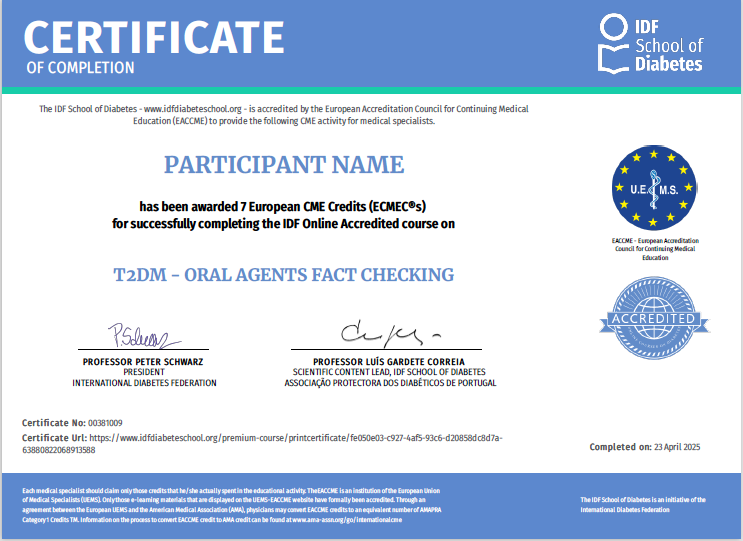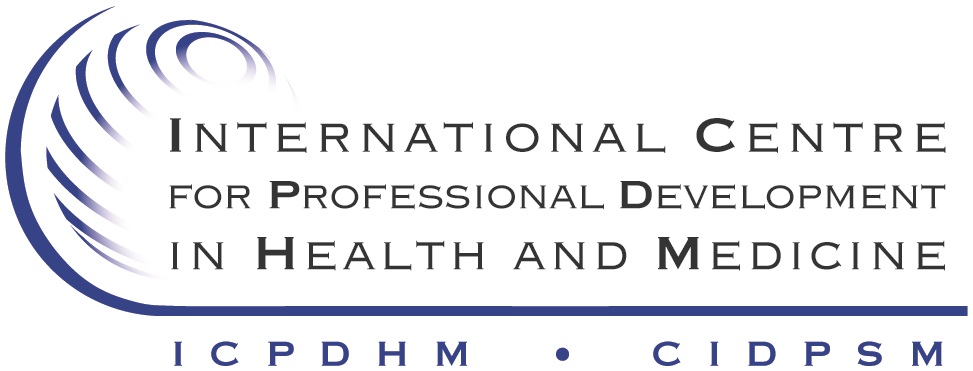These terms of use (hereinafter "Terms of Use"), which we may occasionally update without prior notice, direct your access and use of the online portal www.idfdiabeteschool.org.
Access and use of this platform are currently for the exclusive use of healthcare professionals domiciled globally. Please read these terms of use carefully before registering and using the online platform of the IDF School
of Diabetes.
The information/material you receive through this platform is not intended to be, nor should it be considered to constitute medical advice of any nature. The International Diabetes Federation (hereinafter “IDF”) is not engaged
in rendering medical services, advice or recommendations to individuals with diabetes. The content provided on the IDF School of Diabetes (including the content of the online courses and additional resources) is therefore intended,
and can be used, for educational and training purposes only. It is not intended as, nor can it be considered nor does it constitute, individual medical advice and it is thus not intended to be relied upon to diagnose, treat,
cure or prevent diabetes. Although the content will provide latest evidence-based knowledge required for healthcare professionals, the IDF would recommend that participants seek further hands-on training. People with diabetes
should seek advice from and consult with qualified medical and healthcare professionals on specific situations and conditions of concern. Reasonable endeavor has been used to ensure the accuracy of the content provided on the
IDF School of Diabetes at the date of publication. However, the IDF assumes no legal liability or responsibility for the accuracy, currency or completeness of the content provided herein. Any views, opinions, and/or recommendations
are not those of the IDF or endorsed by the IDF, unless otherwise specifically indicated by the IDF. You must apply your own clinical skills and judgement in relation to anyone to whom you provide care before taking, or refraining
from, any action on the basis of the content on the IDF School of Diabetes. It is possible that our content will not always meet an individual’s own health or medical needs. The IDF cannot be held responsible for personal or other injury, loss, or damage that may result from the content contained within the online courses.
The courses from the IDF School of Diabetes are designed to provide education and training on diabetes care and management, but do not confer any professional designation or medical qualification. The IDF School of Diabetes is not a university or other recognised academic institution. Certificates issued to learners do not confer a medical qualification or entitle to any professional designation.
By accessing, browsing and checking the confirmation box "I agree with these terms of use", you indicate that your act is intended to serve as: (a) your acknowledgment, acceptance and consent to these terms of use; and (b) your
signing of these terms of use is to have the same strength and effect as using a manual signature.
You are responsible for periodically reviewing applicable changes to these terms of use. Your use of this platform after we post any changes to these terms of use constitutes your acceptance of such changes. If you do not agree
to these terms of use (as they may be changed occasionally) or you are not satisfied with this platform, your sole and exclusive remedy is to discontinue using this platform.
If you do not want to agree to these terms of use, you are not permitted to access or use this platform.








